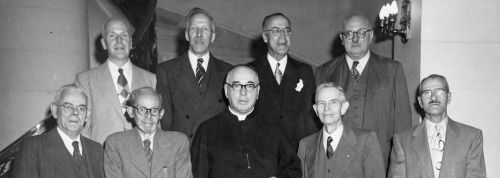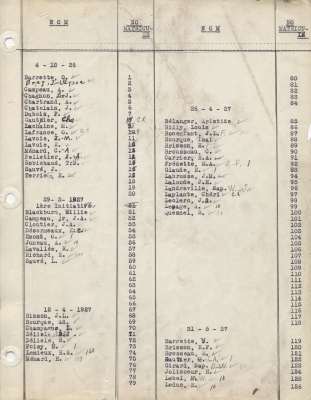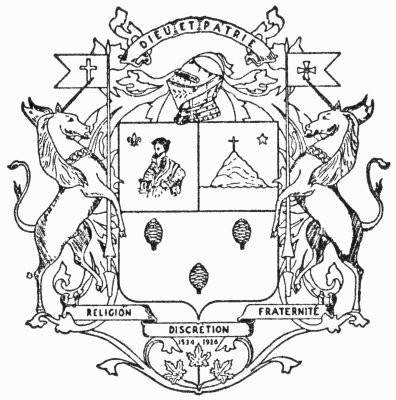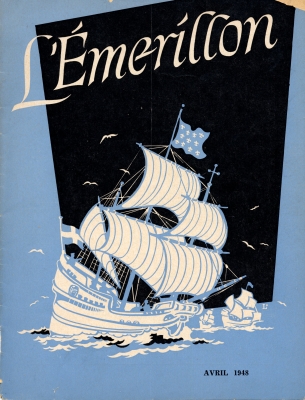The Ordre de Jacques-Cartier (OJC) is founded in Eastview (Vanier) on October 22, 1926, by 17 Francophones of the capital. They meet at the initiative of the Saint-Charles parish priest, Msgr F.-X. Barrette. Their primary motivation is to develop support mechanisms among Francophone federal civil servants to enhance their capacity for promotion to higher levels of public service. The wider goal: to form a solid bulwark against the assimilation of Francophones.
The Ordre de Jacques-Cartier works in the shadows, like the enemy it seeks to fight: the Orange Order, Freemasons, or even the Irish Catholic clergy. It also wishes to avoid the inquisitive gaze of French Canadians whose nationalism is less vigorous than the sentiments that incite members of the Order.
The Ordre de Jacques-Cartier, despite its secret nature, has a legal existence. Its structure is constituted at the top by the Chancery (CX), the supreme authority of the Order, and sustained at the base by the Commandery (XC), often referred to as the recruiting body or the fundamental cell. The Chancery has 33 members, chosen by co-option, who remain unknown to the other members. It sets priorities from Ottawa, where its headquarters are situated, and spells out the nature of actions and tactics to be implemented by the members. The Commandery has 20 to 40 members, recruited for their potential to wield influence; they are civil servants, “caisse populaire” directors, store owners, travelling salesmen and even journalists like André Laurendeau, who is said to have been an important communications channel.
They are charged with the mission of infiltrating key agencies of their environments to get the message across. But one cannot join the OJC just because one wants to. One must be solicited by a member in good standing and be accepted by the Commanders. The latter take on only those candidates they judge to be fired up by sincere patriotism, people they believe can be infused with the spirit of the Order: an unshakable faith in the objectives of the organization, discipline in obedience with respect to watchwords, and discretion. They are apparently numerous. Up to a few months before the dissolution of the Order in October 1964, “La Patente” still counts 5,075 members, divided into 466 cells.
“La Patente,” a deliberately evasive term for speaking about the Order in public, quickly increases its influence in Ontario, then in Quebec, Acadia and the West. It spreads the same message everywhere: English-Canadian and French-Canadian nations are equal, and they must enjoy equal status. The Order is an ardent advocate for the educational rights of Francophone minorities.
Nine founding members of the Ordre de Jacques-Cartier at a plenary meeting of the CX (Chancellery) at the Château Laurier, marking the Order’s twenty-fifth anniversary. Front row: Adélard Chartrand, Émile Lavoie, F.-X. Barrette, Esdras Terrien and Louis-Joseph Châtelain. Back row: Oscar Barrette, Philippe Dubois, Achille Pelletier and Charles Gautier, Ottawa, September 28, 1952. Photo: Champlain Marcil.
University of Ottawa, CRCCF, Fonds Ordre de Jacques-Cartier (C3), Ph3-12b.




